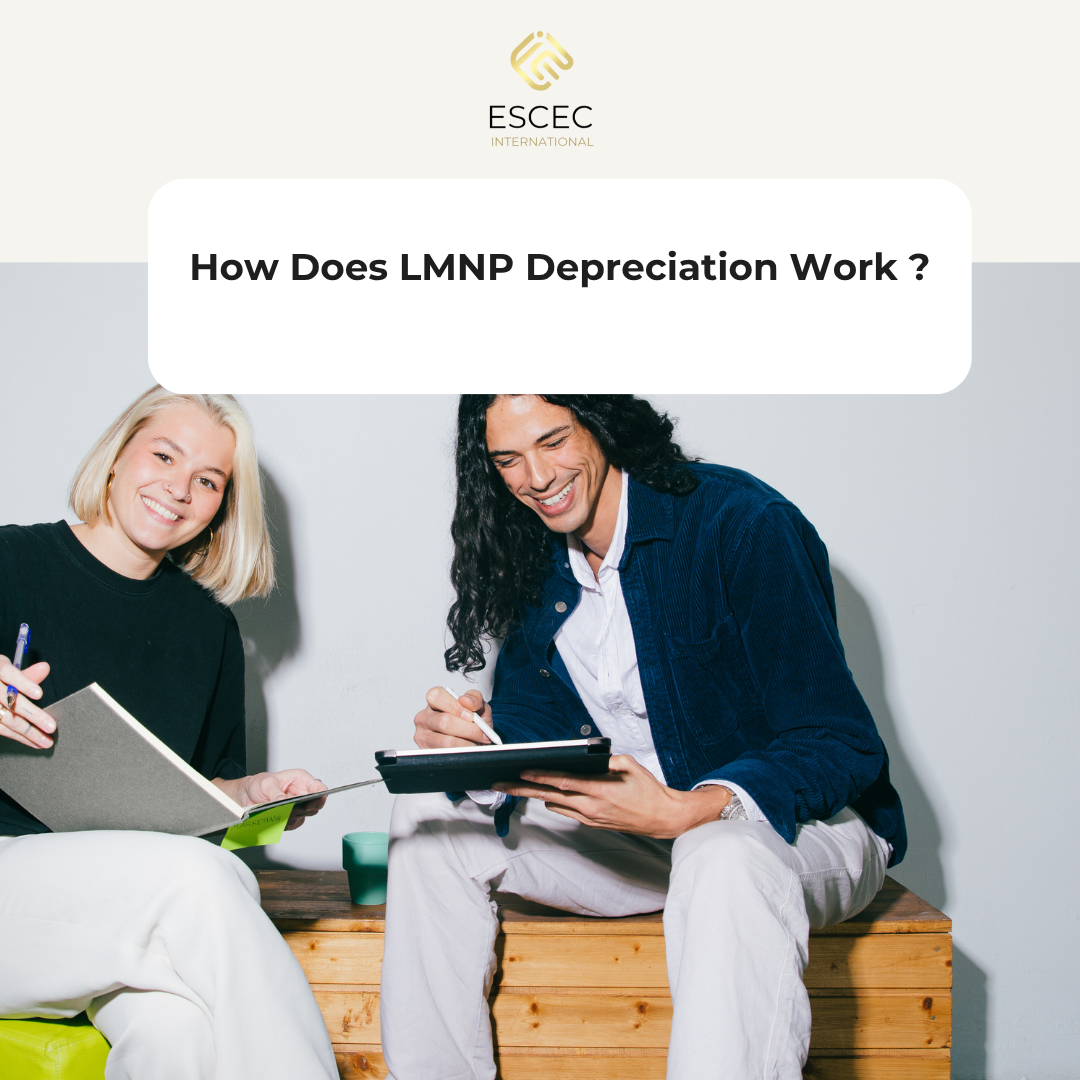How Does LMNP Depreciation Work ?
When it comes to non-professional furnished rentals (LMNP), depreciation is one of the most powerful mechanisms to master in 2026.
It allows landlords, under certain conditions, to depreciate their property, renovations, and furniture — which can significantly reduce their taxable rental income.
LMNP Depreciation: Definition
Depreciation is an accounting mechanism that reflects the gradual loss of value of an asset — whether real estate or furniture — over time.
In practice, this mechanism allows you to record a non-cash expense to offset the property’s decline in value, in accordance with Article 199 sexvicies of the French General Tax Code.
The main benefit? It reduces your taxable rental income — and therefore your taxes.
Each year, the book value of your property is gradually reduced in your accounting records.
For LMNP owners, depreciation helps reduce the taxable base to reflect future renovation costs or furniture replacement within the furnished property.
Each component (the property, renovation work, furniture) is depreciated separately. The total depreciation charge is the sum of all these annual deductions.
Pro tip: Create detailed LMNP depreciation tables to apply the correct percentage to each element.
For instance, a property depreciated over 20 years would lose 5% of its value each year.
Important: In LMNP, depreciation cannot create a property deficit. If your annual rent doesn’t cover all expenses, the unused depreciation can be carried forward indefinitely to future years.
LMNP Depreciation: Why It Matters
After filing your LMNP tax declaration, depreciation is the next most strategic topic.
The main advantage of LMNP depreciation is that it reduces the taxable portion of your rental income.
Depreciation reflects a theoretical loss in value that is deducted from your rental revenues.
If depreciation and expenses equal your total rental income, your taxable result can even drop to zero.
Additionally, since the LMNP regime doesn’t allow property deficits, unused depreciation can be carried forward with no time limit.
Depreciation is purely an accounting mechanism — it doesn’t affect the real market value of your property.
When selling, the capital gain is calculated the traditional way: purchase price minus resale price.
Note: Since the 2025 LMNP reform, any depreciation claimed must now be re-added when calculating capital gains on resale.
Tip: Not sure whether to choose LMNP, a family SARL, or an SCI? Compare each option before deciding — each has different tax and inheritance implications.
Who Can Benefit from LMNP Depreciation?
By default, LMNP landlords fall under the micro-BIC regime, which offers a 50% flat-rate deduction on rental income.
However, this regime doesn’t allow you to deduct real depreciation or actual expenses.
You can opt instead for the simplified real regime, which lets you deduct actual depreciation, loan interest, furniture purchases, CFE tax, and other property expenses.
This option is particularly advantageous when deductible expenses exceed 50% of your rental income.
Property Depreciation in LMNP
There are no strict legal rules for the depreciation period in LMNP.
You can determine reasonable durations and rates based on the expected lifespan of the asset.
Typical depreciation periods:
-
Real estate property: 25 to 40 years (2.5% to 4% per year), often matching the duration of your mortgage.
-
Renovation works:
-
Flooring replacement – 5 years
-
Plumbing, painting, or kitchen refurbishment – 10 years
-
Masonry or parquet flooring – 15 years
-
Electrical renovation – 20 years
-
Note: Purchases under €600 are treated as expenses, not depreciable assets.
Depreciation covers:
-
100% of the property’s purchase price (excluding taxes)
-
Notary and acquisition fees
-
Furniture value (excluding taxes)
-
Value of renovation work
This rule also applies when purchasing property within service residences, such as student housing or retirement homes (EHPAD).
Which Expenses Can Be Depreciated Under LMNP?
Depreciable expenses in LMNP include all purchases over €600 used to maintain, improve, or furnish the rental property.
Keep all invoices as proof in case of a tax audit.
Furniture depreciation periods:
-
Beds and mattresses – 6 years
-
Dining tables and sofas – 10 years
Example:
-
Apartment purchase: €200,000
-
Depreciation period: 25 years → €8,000 per year
-
Furniture: €5,000 depreciated over 5 years → €1,000 per year
For the first five years, the landlord can therefore deduct €9,000 per year, then €8,000 per year for the following 20 years.
FAQ
What is the depreciation period for an LMNP apartment?
Between 25 and 40 years, or roughly 2.5% to 4% of the purchase price per year.
Can you generate a depreciation deficit in LMNP?
No. Depreciation cannot create a deficit, but unused depreciation can be carried forward to the next tax year.
What expenses are deductible in LMNP?
Expenses must:
-
Be incurred for the direct management of the rental activity.
-
Represent real, documented costs.
-
Be recorded during the relevant fiscal year.
Examples: insurance, electricity bills, co-ownership charges, property management fees, and loan interest.
Need Professional Guidance?
LMNP taxation and depreciation rules can be complex, especially under the real regime.
To avoid mistakes or tax reassessments, consider professional support.
👉 Escec International can assist you with your LMNP accounting, depreciation schedules, and tax declarations:
escec-international.com

